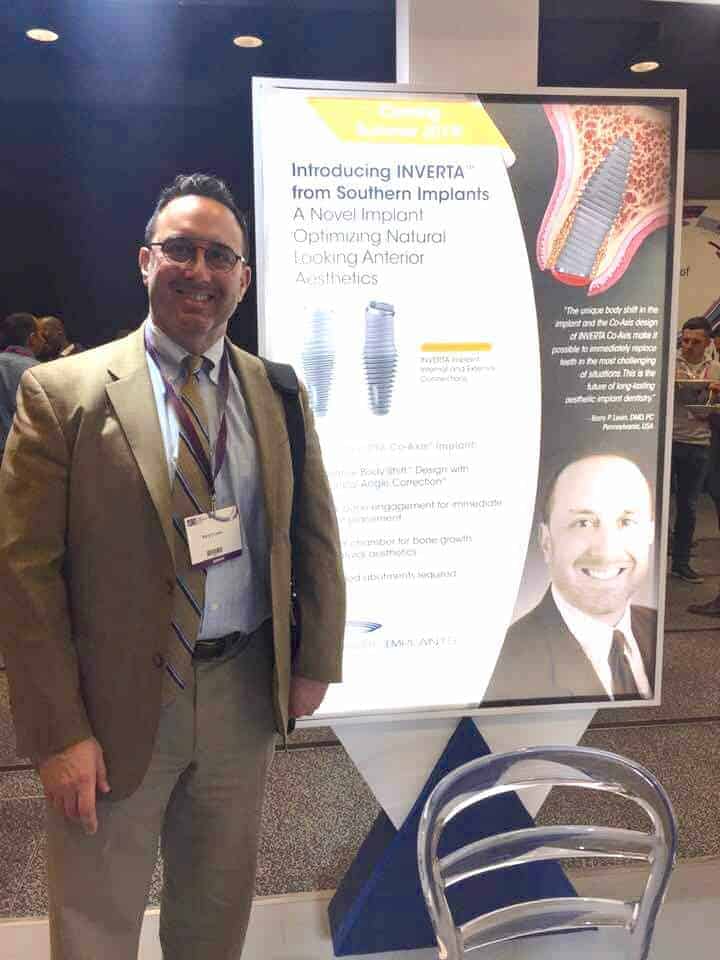
AO conference in Washington DC
April 3, 2019
Dr. Levin Speaks at THE ADI Team Congress 2019 Conference in Edinburgh, Scotland
May 14, 2019Swollen, painful gums are usually the first signs of periodontal disease. If left untreated, an infection can develop rapidly throughout your mouth. As the disease spreads, it’s usually accompanied by bleeding.
While bleeding gums can be a result of brushing too hard, ongoing issues could signify a bigger problem, which needs immediate attention of a Bensalem periodontist.
In 1999, a study by the U.S. National Institutes of Health (NIH) has shown that about half of Americans over the age of 30 have bleeding gums.
Continue reading to learn more about periodontal disease and how to treat it.
What is periodontal disease?
Periodontal disease, also known as gum disease, is an inflammation of the gums and tissues. It is caused by the bacteria that has built up in the plaque. Plaque is a substance that has a sticky texture and forms hours after someone has brushed their teeth.
Plaque production is the body’s response to any bacterial infections. In order to destroy the bacteria, the cells within the immune system release various substances that actually cause the inflammation of the gums.
There are two types of periodontal diseases:
- Gingivitis – When the gums at the neck of the teeth become inflamed
- Periodontitis – When the bone and tissues of the teeth become inflamed
These gum diseases open the way for infections to develop and spread. However, it’s nothing that you and a Bensalem periodontist can’t prevent together.
What are the risks of periodontal disease?
Despite the fact that plaque buildup is the main contributor to gum disease, there are other factors involved as well.
A few of these factors include:
- Smoking – Smoking is one of the most common reasons as to why people contract gum disease. The chemicals in the cigarettes degrade the gums over time. The longer a person smokes, the greater the risk of gum disease.
- Genetics – This may seem like an odd factor, but it’s true. Genetics actually play a huge role in whether or not a person contracts gum disease. In fact, a few studies have shown that about 30 percent of the population have an inherited vulnerability to periodontal disease.
- Stress – While stress isn’t exactly a cause of gum disease, it can make the condition worse. This is because stress weakens a person’s immune system, making it harder for the body to fight off infections.
Treating Periodontal Disease
Treating gum disease is one of the easiest things a person can do, especially a Bensalem periodontist. Of course, everyone can prevent gum disease by practicing proper oral hygiene. This includes brushing, flossing and rinsing at least two times a day.
However, there are rare instances where gum disease worsens severe and requires additional treatment.
Below are several treatment options that can be done if you’re diagnosed with gum disease:
- Scaling and rooting, which is a non-surgical treatment
- Gum Grafts
- Regenerative procedures such as bone grafting
At the Center for Periodontics & Implant Dentistry, your smile is our top priority. If you think you have gum disease, time is of the essence. Contact our office today to schedule an appointment.


